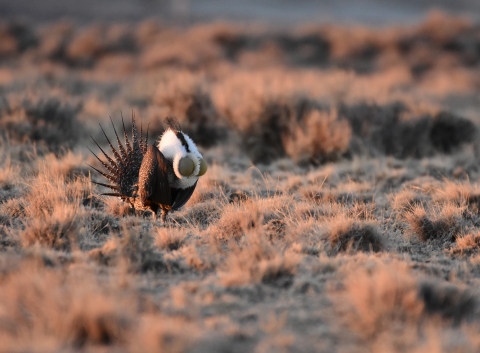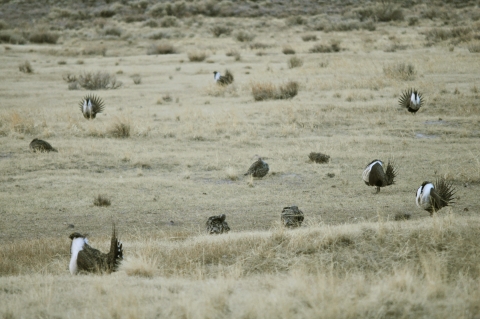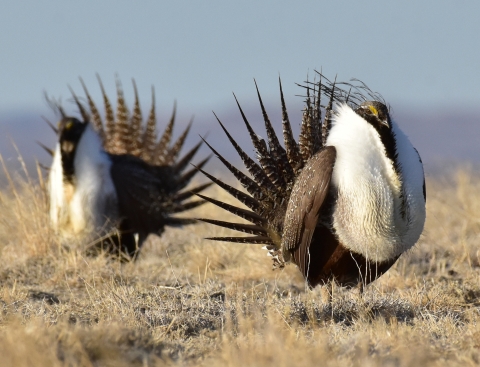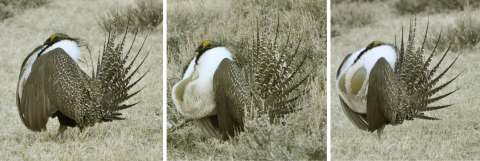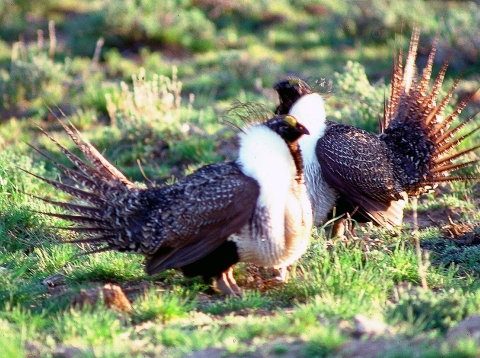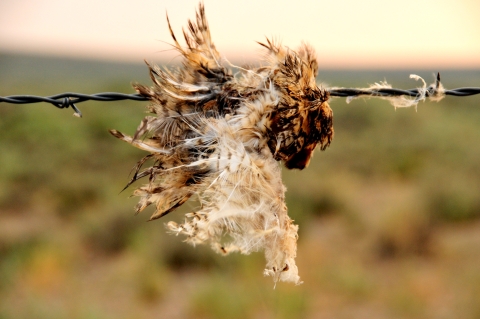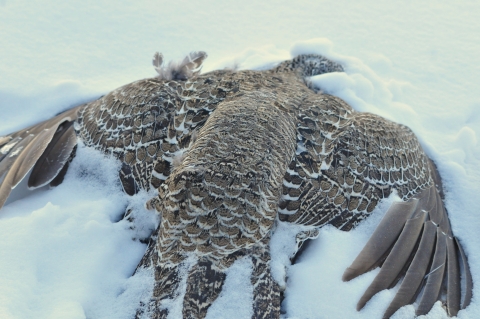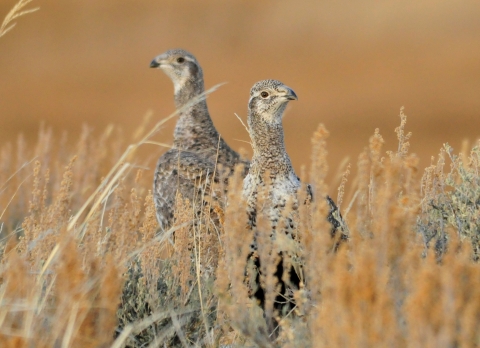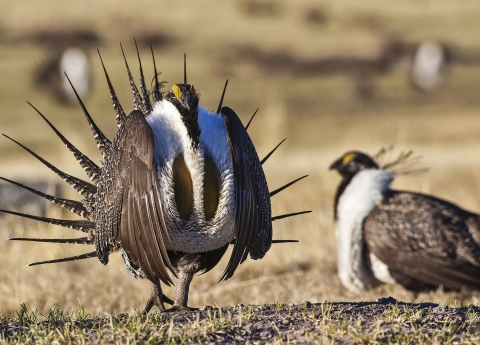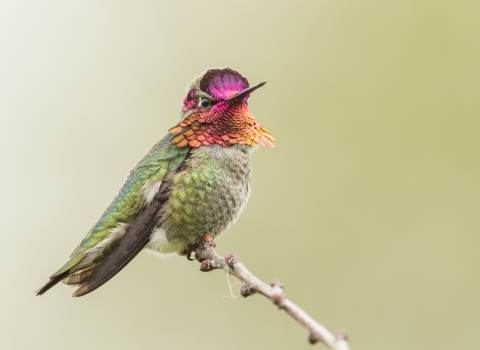Each spring greater sage-grouse serenade each other through sound and try to wow each other through dance. But their populations have declined in recent years. Learn more about this ancient romance and how to help!
Setting the Scene for a Sagebrush Soiree
Before we get down to business, let’s talk about where the magic happens.
Greater sage-grouse live in higher elevations (4,000 to over 9,000 feet) in habitats known as sagebrush sagebrush
The western United States’ sagebrush country encompasses over 175 million acres of public and private lands. The sagebrush landscape provides many benefits to our rural economies and communities, and it serves as crucial habitat for a diversity of wildlife, including the iconic greater sage-grouse and over 350 other species.
Learn more about sagebrush . Spotting one in the wild may be challenging but far from impossible. Their range stretches east from South Dakota to West Coast states (Washington, Oregon, California), and from southern Utah into Canada. More than 55% of their historical range has been lost since the 19th century.
Greater sage-grouse survival is tied to healthy sagebrush habitat – they cannot survive unless there is a minimum of 25% sagebrush cover. Low-lying sagebrush and understory plants provide nourishment and adequate cover from birds of prey without providing predators places to perch.
Sagebrush also serves as a “nurse” plant for understory plants important to sustaining grazing wildlife and domestic livestock. The sagebrush ecosystem supports a variety of recreational activities too, such as wildlife observation and photography. Many species found in the sagebrush ecosystem (including the greater sage-grouse) live nowhere else in the world. More than 350 species call this habitat home.
Leks of Love
Sagebrush provides vital habitat for greater sage-grouse, and it’s where love connections are made. On breeding grounds called leks, male sage-grouse present impressive dance and song displays in hopes of seducing a mate.
Female sage-grouse closely inspect males’ audiovisual presentations (aka their sounds and moves) to see if a male meets their standards.
March through April is generally peak lekking (and mating) season for the greater sage-grouse. However, lekking can start as early as February and continue into May.
Looking Great and Ready to Mate!
Male greater sage-grouse is one of the more striking members of the animal kingdom. This large ground-dwelling bird is easily identified by the white chest feathers and yellow air sacs on their chests. They are quite the charmers!
Males are larger than females and sport a white ruff around their necks in addition to the typical mottled brown, black and white plumage.
Females are a mottled brown, black, and white. This helps them camouflage and protect their young.
Serenading Sounds
Male greater sage-grouse gather on leks at dawn and perform a complex highly choreographed display. With their tail fanned and erect, the male repeatedly gulps air while stepping forward and then forcefully releases it. He stands tall, inflated chest held high and sweeps his wings across his breast, which creates a swooshing sound. With head tilted back, he rapidly inflates, bounces and deflates the yellow air sacs on his chest. The motion of the outward popping of the air sacs creates a series of echoing pops. The males display almost continuously, up to 10 times a minute for three to four hours in the morning.
Often, just one or two dominant males mate with most of the females – based on the females’ choice. Populations that are too small can create inbreeding challenges, so it’s important that sage-grouse have the large breeding grounds to strut their stuff and adequate seasonal habitat to support their dietary, nesting, and sheltering needs.
Dance-off
Male greater sage-grouse are intensely territorial on lek sites, defending a few yards across within the larger lek site. Rival males will often have a standoff and face head to tail a foot or two apart. The males will crouch low and bob quickly during a standoff and give off a low, repeated clucking sound. A standoff might turn physical with a battering of the wings to drive away or exhaust their opponent. These interactions rarely cause serious injury.
Threats
Greater sage-grouse face many threats, including habitat loss and fragmentation. We’re working with public and private partners across the American West to address these challenges so greater sage-grouse continue to strut each spring for generations to come. Learn about a few challenges below.
Infrastructure. Fences can be a big threat to sage-grouse. Since they fly at dusk and dawn, sage-grouse have trouble seeing wire fences; striking one can result in injury or death. Roads can pose threats due to collisions with fast-moving vehicles and habitat fragmentation, while powerlines provide places for predators such as birds of prey to perch.
Invasive species. Cheatgrass and other nonnative grasses do not provide food, cover, or appropriate mating grounds like native sagebrush – they also outcompete native grasses and result in more intense, unnatural wildfires that further change the natural environment in ways harmful to native plants and wildlife. Conifers pose similar threats, and as especially thirsty trees, they drink up a lot of valuable groundwater. Conifers also provide places for predators to perch.
Energy development. Large structures can provide places for predators, such as birds of prey, to perch - presenting a threat to greater sage-grouse. They can also contribute to significant habitat degradation and fragmentation. Sage-grouse may become stressed and avoid certain areas due to the intrusive sights and sounds of energy production facilities.
Noise pollution. Unnatural and loud noises, including fireworks and heavy road noise, can scare and stress native wildlife, including greater sage-grouse.
Climate change. Warming temperatures and reduced precipitation make sagebrush more vulnerable to unnaturally frequent and intense wildfires, insects, disease and invasive species invasive species
An invasive species is any plant or animal that has spread or been introduced into a new area where they are, or could, cause harm to the environment, economy, or human, animal, or plant health. Their unwelcome presence can destroy ecosystems and cost millions of dollars.
Learn more about invasive species .
How You Can Help
Leks are where the romance happens – so don’t kill the mood! You can support a healthy sagebrush habitat and greater sage-grouse conservation efforts across America with a few tips below.
Give grouse space. Always respectfully observe wildlife from a safe distance for your safety and theirs. Generally, if wildlife knows you’re there or changing their behavior around you, you’re too close. Explore Wyoming Game and Fish Department’s tips for ethical viewing of sage-grouse leks.
Grouse-friendly fences. Science shows that fence markers can help greater sage-grouse avoid deadly strikes with wire fences. Check out other fencing recommendations from USDA's National Resources Conservation Service.
Stop the spread of invasive species. Brush off your clothes to prevent the spread of invasive grasses. The seeds of these plants can hitch a ride and then get introduced to new areas, threatening native plants, wildlife, local communities, the economy, and human health and safety.
Visit a national wildlife refuge and other public lands. Learn more about sagebrush country by visiting to experience this unique western habitat for yourself! Find your nearest national wildlife refuge.
Volunteer on public lands. Discover volunteer opportunities across America, including at nearby national wildlife refuges. Volunteer.gov is your go-to resource for volunteer openings on federal public lands.
Buy a federal Duck Stamp. Put your stamp on conservation by purchasing a federal Duck Stamp. Ninety-eight cents of every dollar go directly into the Migratory Bird Conservation Fund to purchase or lease wetlands and wildlife habitat for inclusion in the National Wildlife Refuge System.
Join the conversation. Spread the word about sage-grouse lekking and the importance of sagebrush conservation on social media by following and using #SagebrushCountry and #350species.
Witness the Timeless Strut: Live Lek Cam Each Spring
Have you ever seen a greater sage-grouse strut? Now you can, from the comfort of your own nest! Simply search “greater sage grouse lek cam” online to find live or recorded footage.
Several conservation organizations live-stream greater sage-grouse leks each spring and make recorded footage available year-round, providing an easy way to ethically experience a lek.


